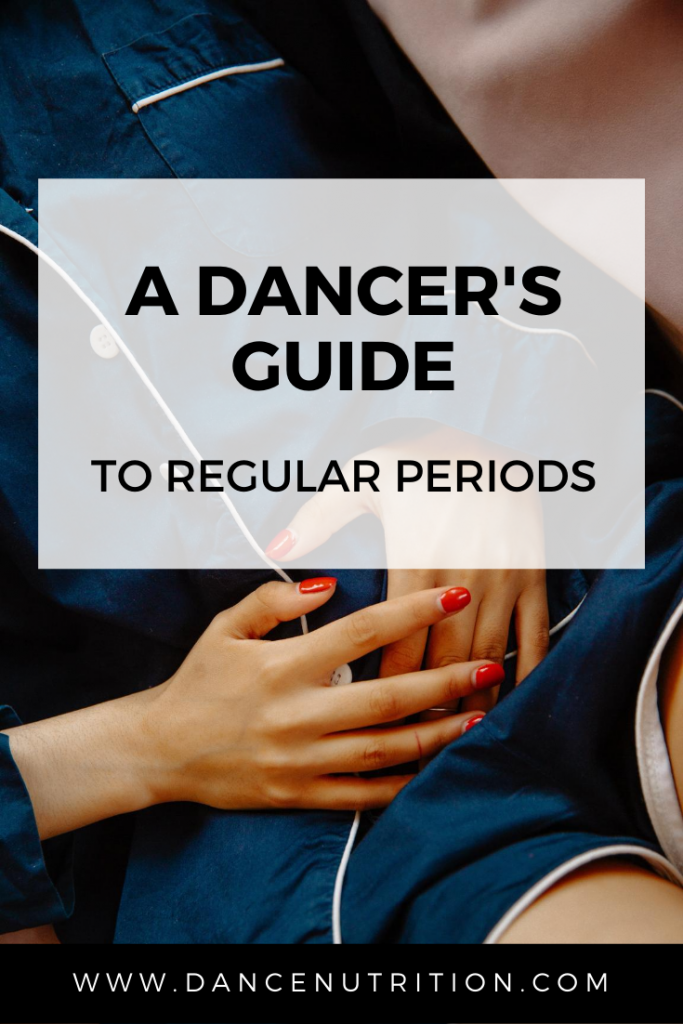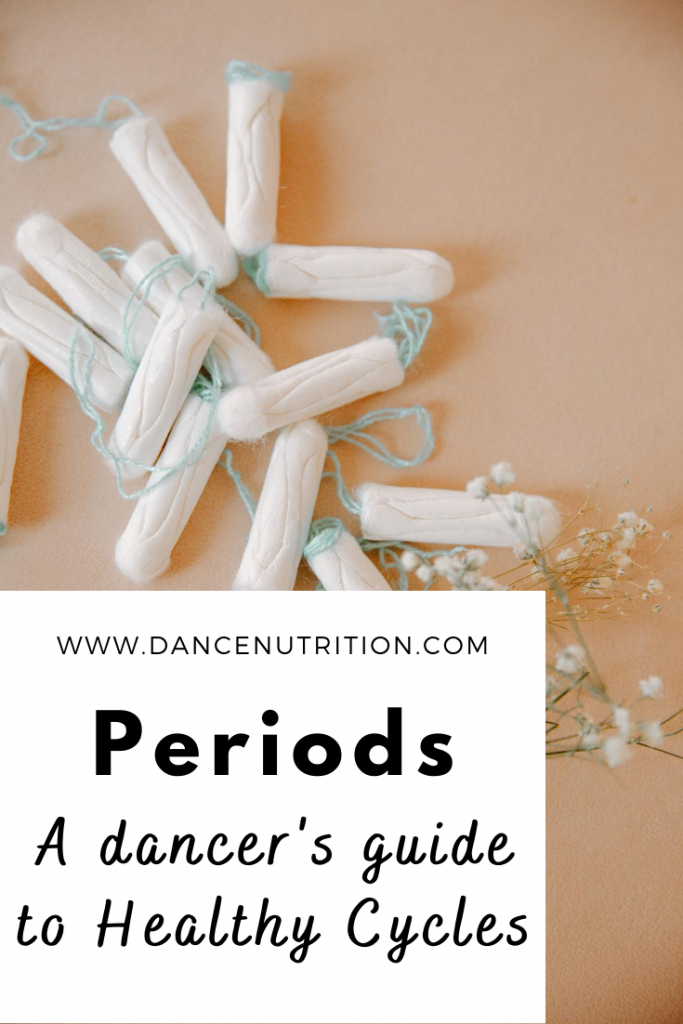Is it normal for dancers to have an irregular or nonexistent cycle? Though common, irregular or nonexistent periods can indicate a more significant medical issue that can ultimately, affect a dancer’s performance.
Irregular or absent periods can result from inadequate nutrition and overtraining, leading to decreased bone density, increased risk of injuries, and reduced energy levels. Painful periods can also impact concentration and stamina during rehearsals and performances. This blog post will uncover everything dancers need to know about period health and strategies to support it.
Understanding Menstrual Health
Menstrual health refers to the regularity, duration, and symptoms of your menstrual cycle. A healthy menstrual cycle typically ranges from 21 to 35 days, with menstruation (bleeding) lasting 3 to 7 days. However, dancers often face unique challenges that can disrupt their menstrual health, including intense physical activity, low body fat, and stress. The three specific conditions that signify menstrual irregularities:
- Amenorrhea is the absence of menstruation for three or more consecutive months— it can be caused by several factors which we’ll uncover below.
- Oligomenorrhea refers to infrequent menstrual periods, with cycles longer than 35 days.
- Dysmenorrhea involves painful periods that can impact performance and quality of life.
Dancers and Amenorrhea
There are two types of missing periods. The first is a delayed onset of menstruation known as primary amenorrhea. If you haven’t yet menstruated for the first time, and you’re younger than 15, there may not be cause for concern… just yet. The time at which a female gets her first period can vary from as young as nine years old to as late as sixteen years old.
Since many dancers train rigorously during these pubescent years, it can be tough to decipher whether or not this delayed onset is related to age or RED-S, a syndrome resulting from energy imbalances. Secondary amenorrhea results in dancers who have previously menstruated, but then experience 3 or more consecutive months without a cycle (6 or more consecutive months in those with previously irregular periods).
Let’s review why this might happen and what a dancer can do to prevent or solve it.
Why are dancers missing their periods?
- Over-exercising
- Under-eating
- The use of oral contraceptives (AKA birth control)
- Recent and rapid weight loss
- Having too low of a percentage of body fat
- High levels of physical or emotional stress
- Natural causes like pregnancy and breastfeeding
- Hormonal imbalances such as PCOS and various thyroid conditions
Functional Hypothalamic Amenorrhea
Looking at this list, more than half are considered lifestyle factors related to weight, stress, and exercise. These are often the culprits of one of the most common classifications of secondary amenorrhea: functional hypothalamic amenorrhea (FHA).
FHA occurs when the hypothalamus (a small gland located at the base of the brain) dysregulates (slows or stops) the production of certain hormones required for human reproduction; namely: estrogen and progesterone. Disordered eating, overtraining, and low body fat can be major contributors to impaired production of estrogen.
I’m not looking to become pregnant anytime soon! …So why should I be concerned?
The ability to menstruate isn’t just for the benefit of reproduction (though for obvious reasons, that is a big benefit down the road!) Estrogen is also a key player in bone development. When hypothalamic production of estrogen runs low, such as in FHA, the risk of bone-related injuries like stress fractures skyrockets. In the long run? You’ll risk severe bone loss— conditions like osteopenia and osteoporosis— and infertility.
Steps to Period Recovery
#1: Tackle Disordered Eating
Identifying and resolving disordered eating is one of the first steps you can take to promote a regular period. Disordered eating often includes:
- Dieting or restrictive rules around food.
- Intense levels of exercise as a way to punish or “make up” for “bad” eating habits.
- Compulsive eating habits, such as binge eating in response to under-eating.
- Frequent weight fluctuations.
- Obsessive behaviors around food such as calorie-counting and food measuring/weighing.
Working with a Registered Dietitian Nutritionist is encouraged to help dancers rebuild their relationships with food. You can also grab this free starter guide from my online program, The Healthy Dancer© to begin detangling those habits.
#2: Eat More
Though easier said than done, simply increasing how much food you eat daily is a great next step. But how should you monitor “how much” to eat if calorie counting is discouraged? For dancers with a history of extreme food restriction, calorie awareness is helpful in weight restoration. Knowing a roundabout daily calorie goal might be necessary to provide your body with sufficient meals and snacks to support its metabolic and physical needs. Though calorie needs vary greatly among individuals, this article will help you calculate a starting point. Just a hint… most dancers need between 2500-3500 calories daily.
Eating balanced meals and snacks consistently throughout the day, such as every two to four hours is another way dancers can get enough in. Fueling the body intuitively should be considered only when a dancer’s weight has been restored and a regular menstrual cycle ensues. Here are a few articles to read once you’re at that point:
- Intuitive Eating for Dancers
- Breaking Food Rules
- Lost Your Hunger Cues?
- Understanding Hunger and Fullness
#3: Find Relief From Stress
Even for the dancer who eats plenty— a surge in stress hormones is a normal response to chronic exercise that may contribute to menstrual irregularities. Emotional stress can also suppress the hypothalamic production of reproductive hormones. Consider stress-reducing activities such as yoga, meditation, or deep-breathing exercises can help. Here’s additional support for navigating stress.
Nutrients for Period Recovery
Aside from eating enough calories to support a period-friendly weight, certain foods, and nutrients can benefit menstrual health. Here are a few to consider:
- Omega 3s and monounsaturated fats are abundant in plant oils like olive and canola, walnuts, ground flax, and fatty fish like salmon and tuna. Fat is also required for vitamin and mineral absorption. This will help your body gain the bone-building benefits of vitamin D and calcium.
- Full-fat dairy has some research supporting not only benefits for bone health but also benefits for period health. One study found that 1-2 servings of full-fat dairy daily, including whole milk, 4% (or full-fat) yogurt, and cottage cheese seemed to support ovulation.
- Whole grains and other sources of complex carbohydrates like quinoa, farro, wild rice, and whole-grain bread promote steady levels of blood sugar and insulin. However, be mindful not to overdo the fiber in your diet as excessive intake can impair ovulation.
- Plant foods high in iron, like beans, lentils, pumpkin seeds, dark leafy greens, fortified cereals, tofu, and other legumes might promote fertility (AKA your period).
Dance, exercise, and amenorrhea
Aside from food, physical activity is another major factor in the presence of FHA. For dancers, high-intensity and above-average training is common, especially around summer intensive and nutcracker season.
Should I stop dancing?
This is often a difficult question for most dancers to face. At baseline, the likelihood that a dancer is eating enough to support an intense dance schedule is low. This is because most dancers either underestimate their nutritional needs or lack the time to prioritize them. Working with a registered dietitian can help you evaluate whether or not your intake is supporting your expenditure. If it’s recommended to you, time away from the studio is often just temporary. Click here to learn more about navigating time away from the studio.
Dancers who rely on their dance career as a main source of income might not have the privilege of taking time off. If that’s the case, first lighten your cross-training routine. Hitting the gym after class might put too much stress on your body. Working with a dietitian and mental health therapist is your best bet for learning to turn your exercise routine into a more sustainable plan that encompasses joyful movement.
Should dancers take birth control to induce their period?
In the past, oral contraceptives were suggested in the treatment of bone loss related to amenorrhea. However, this practice is no longer recommended because of its potential to mask the underlying reason for menstrual dysfunction (energy imbalance) and delay the required treatment (increasing caloric intake and weight gain). Furthermore, research suggests that even with hormone therapy, impaired bone mineral density persists among ballet dancers, suggesting other factors at play beyond just estrogen insufficiencies.
Preliminary research suggests a potential association between transdermal estrogen (an estrogen patch) and improvements in bone mineral density. However, this too remains debatable and inconclusive. If concerned, dancers should consult with a trusted medical doctor before starting supplemental estrogen and work with a Registered Dietitian Nutritionist to ensure energy balance is being promoted.
Help! How should dancers dance during their periods?
Dancing while on your period can take getting used to. To help, I gathered a few helpful tips from dancers on Instagram to share what works best for them:
- Black leotards are a must!
- Longer skirts
- High-cut underwear with liners
- Period underwear, menstrual cups, and discs (here’s a brand many dancers like)
- Tampons
- Pain relievers (as prescribed by a medical doctor)




